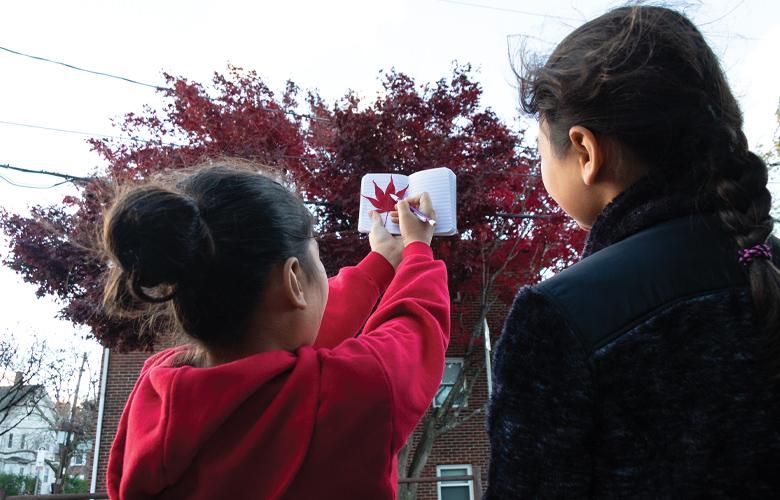
As a parent, I’m keenly aware that I should be doing more science activities with my children. But I’m no scientist, and I simply don’t have a good sense of what activities to do. Is it enough to play with LEGOs? Do I need a microscope?
Cindy Hoisington, my colleague here at EDC, says that helping kids learn science doesn’t have to be stressful or require a lot of stuff. She stresses that in the early years, science activities should be a family affair—wondering, exploring, and sharing your discoveries. These family experiences are key to inspiring a lifelong interest in science.
With fall in full swing, Cindy offers three quick, fun science activities to try at home.
1. Chart the Weather
Make a chart with columns for sun, rain, wind, and clouds. Go outside and encourage your child to observe the weather using all their senses. Then fill out the chart together. At the end of the week, tally up how many sunny, windy, cloudy days there were.
If you have an outdoor thermometer, try charting the temperature too. “You can talk about how the temperature changes over time, and how that influences what we wear outside and what we do for fun,” says Hoisington.
2. Apple Taste Test
Fall is apple season, and an apple taste test can be a fun science activity. All you need are three or four different varieties of apples—and some willing taste testers.
“Which apples are sour? Which are sweet? Which ones are crunchier or softer?” says Hoisington.
Tabulating findings in a chart is a good way to record results. Children may enjoy drawing pictures of the apples, too. To take the exploration further, do a blind taste test. Or bake a few pies with different varieties and see which tastes best.
3. Explore Seeds
Finally, Hoisington says that collecting, comparing, and counting seeds can be an engaging activity. Try cutting open a pumpkin, some apples, or other kinds of fruits and vegetables. An empty egg carton works well for counting and sorting the seeds.
How are the seeds the same? How are they different? Do an experiment by putting different kinds of seeds out for the birds. Which ones were their favorites? How could you tell?
I’ve started doing more of these activities with my own first grader, and I’ve been surprised by how easy they are to integrate into our daily routine. Science—and talking about science—can happen anywhere. Do you have other ideas for fall-themed science activities? Share them below.
Burt Granofsky is a senior writer at EDC.
Add new comment